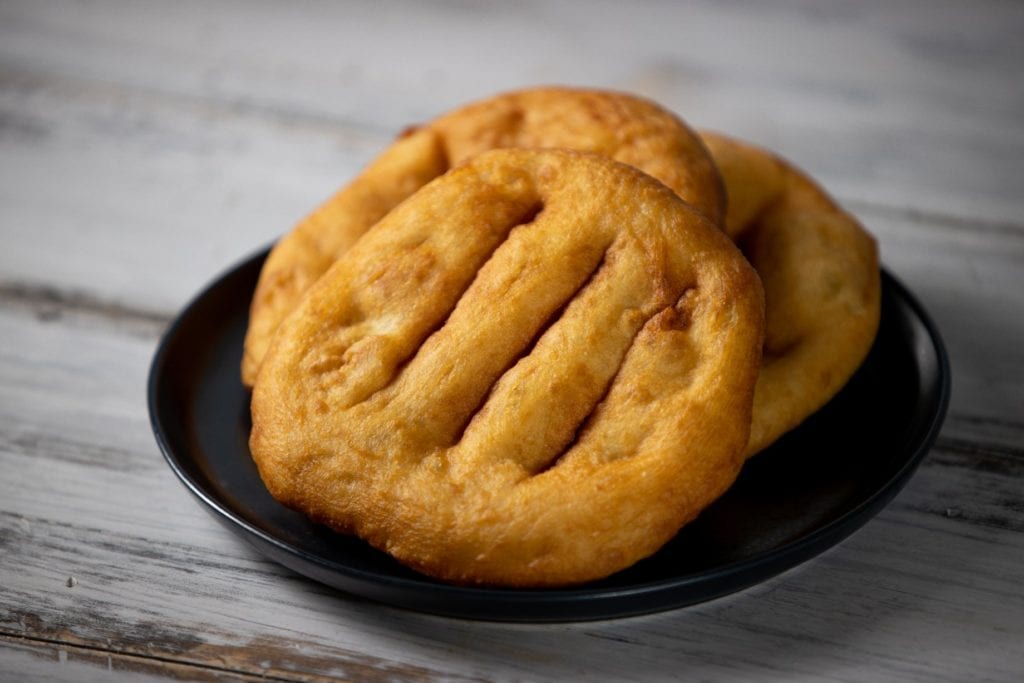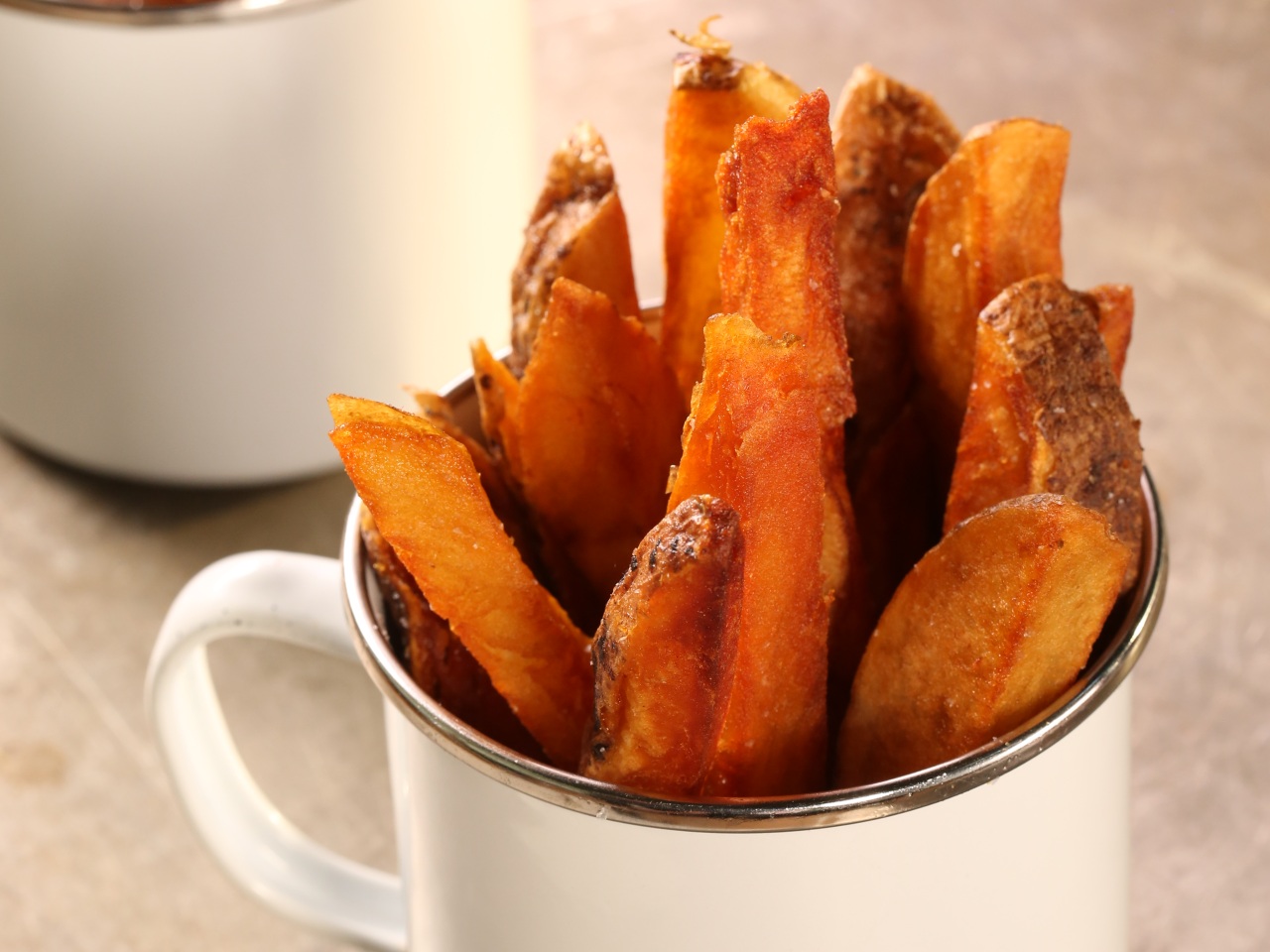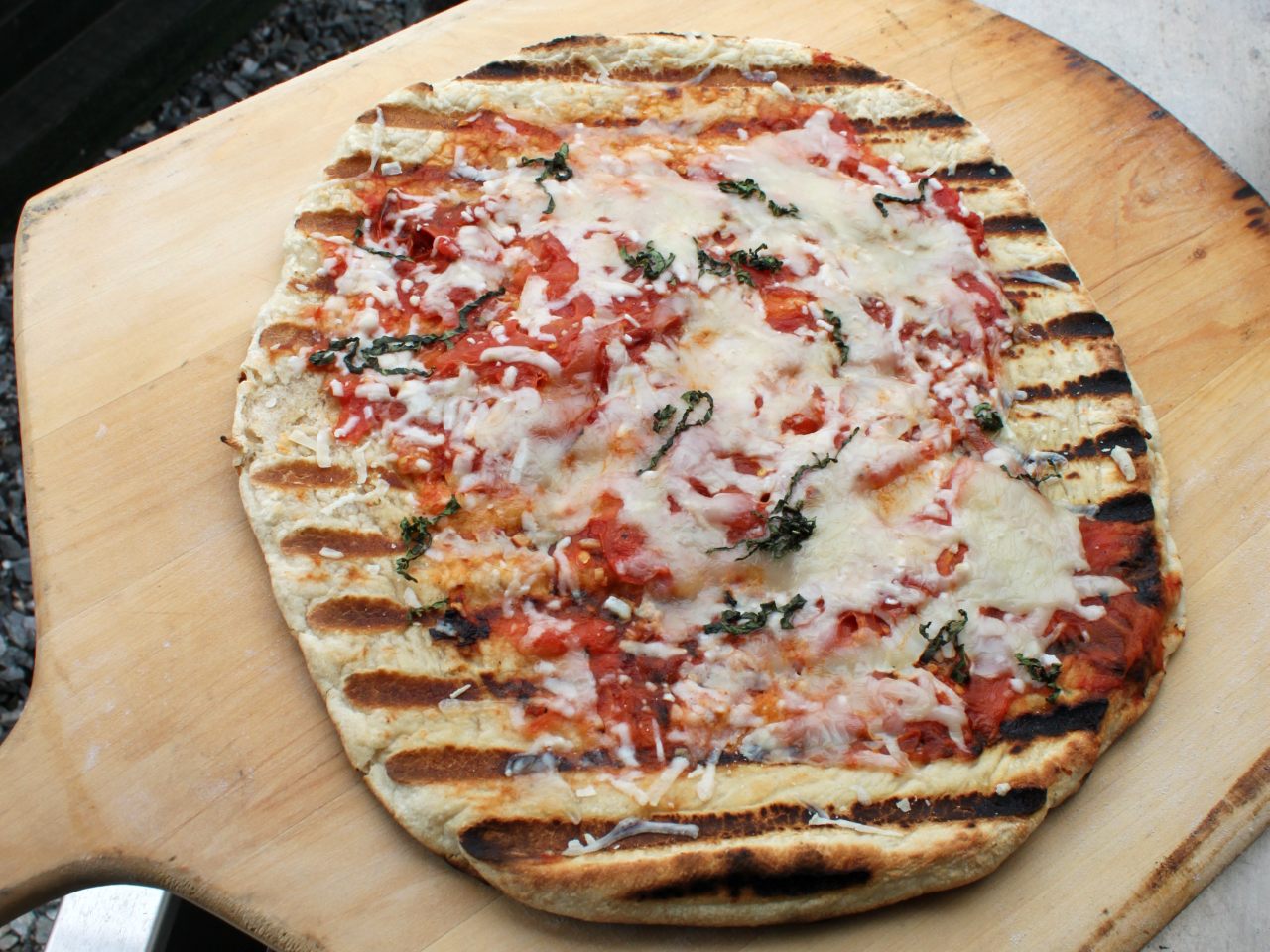
Hungarian Potato Langos

ACTIVE TIME: 1 hour 25 minutes
TOTAL TIME: 2 hours 30 minutes
Yield: 8 servings
Yeah, that's right...bread made with potatoes. Historically speaking, potatoes probably made their way into Hungarian breads like langos as a fill-in for wheat when there wasn’t a lot of wheat around, such as during wartime and famine.In addition to being just plain delicious, potatoes serve a function other than flavor: Adding potatoes, or even potato flour or freeze-dried flakes, can also make a bread stay soft longer. This recipe first appeared in Season 2 of Good Eats: The Return.
Read More
Read Less
Software
- 1 1/2 pounds russet potatoes
- 4 2/3 cups all-purpose flour, plus up to 1/2 cup (75 grams) more, if needed
- 3/4 cup plus 2 tablespoons whole milk
- 1 tablespoon plus 1 teaspoon neutral oil, plus 5 to 7 cups (1.2 to 1.7 liters) for frying (such as sunflower or peanut)
- 1 1/2 tablespoons instant yeast
- 1 1/2 tablespoons kosher salt
- 1 1/2 teaspoons sugar
Specialized Hardware
Stand mixer with paddle and dough attachments
Tall 2- to 4-quart container
Digital kitchen scale
Dutch oven
Digital instant-read thermometer or fryer thermometer

ACTIVE TIME: 1 hour 25 minutes
TOTAL TIME: 2 hours 30 minutes
Yield: 8 servings
Procedure
Peel the potatoes and cut into 1-inch cubes. Measure out 580 grams (1 1/4 pounds)Save any remaining potatoes for another use. of the peeled and cubed pieces and transfer to a medium saucepan. Cover the potatoes with 1 inch of water and place over medium-high heat. Bring to a boil, then reduce the heat to medium-low and simmer until soft, 10 to 12 minutes. - While the potatoes are boiling, deposit the flour, milk, 1 tablespoon of the oil, yeast, salt, and sugar in the bowl of a stand mixer fitted with the paddle attachment. Don’t worry about turning on the mixer yet. (This recipe works best using a large, professional-series mixer. If using a smaller mixer, keep a hand on it while kneading to prevent the mixer from walking off the counter.)
- Drain the potatoes very well, then return them to the saucepan over medium heat and cook, stirring and breaking up large pieces, until the potatoes are dry and crumbly, about 3 minutes.
- Transfer the potatoes to the stand mixer bowl and mix on low speed until the dough begins to come together, about 30 seconds. Swap out the paddle for the dough hook and knead on medium speed until somewhat smooth, about 4 minutes. Inspect the dough. If it’s very sticky, tearing, and smearing around the bottom of the bowl, add 1 tablespoon of flour and mix on low speed until the dough no longer sticks to the bowl. Keep checking the dough; you may have to add up to 4 tablespoons of flour depending on the moisture level of the potatoes. Return to medium speed and continue kneading until the dough is smooth, another 3 minutes. Transfer to a lightly floured counter and knead by hand for a final minute. If the dough sticks heavily to your hands, work in a bit more flour. The dough should be soft but not overly tacky.
- Shape dough into a ball and move to a tall 2- to 4-quart container or 8-cup liquid measuring cup. Add about 1 teaspoon of oil and rotate the dough in the oil to coat it evenly. Press down to flatten the top of the dough, then mark the dough height on the outside of the bowl with tape or a rubber band. Cover the bowl with plastic wrap and leave to rise at room temperature until the dough has doubled in size, 20 to 40 minutes.
- Once risen, punch down the dough to work out large gas bubbles. Transfer to a lightly floured counter and divide into eight 175- to 180-gram pieces. Form each into a smooth ball, then transfer to a parchment-lined baking sheet. Cover with a towel and rest for 10 minutes.
- When 5 minutes remain, heat 1 inch of the oil in a wide Dutch oven over medium-high heat to 350°F. Line a baking sheet with a wire rack.
- One at a time, flatten each dough ball into a circle, then stretch or roll into an 8- to 10-inch disc. Cut three slits across the center of the disc to help prevent large bubbles from forming during cooking. Transfer to a parchment-lined baking sheet and top with a second sheet of parchment. Repeat with the remaining dough rounds.
- When the oil is ready, fry the doughs, one at a time, until puffed and golden brown, 1 to 1 1/2 minutes per side. (Although a spider or slotted spoon can be used for flipping, I manage much better with wooden chopsticks.) Transfer the golden-brown beauties to the wire rack as they come out of the oil to drain. Keep an eye on the oil temperature and adjust the heat as needed to maintain 350°F. Continue to stretch out the remaining dough discs while frying.
- Consume the breads warm, if possible. (When hot, I always toss one in a zip-top bag with some sugar and cinnamon … the best doughnut ever.) Leftovers freeze well: cool to room temperature, wrap tightly in plastic wrap, and seal in a gallon-sized zip-top bag. Freeze for up to 6 months. Reheat straight from the freezer in a toaster oven or directly on the oven rack in a 425°F oven for 10 minutes.







